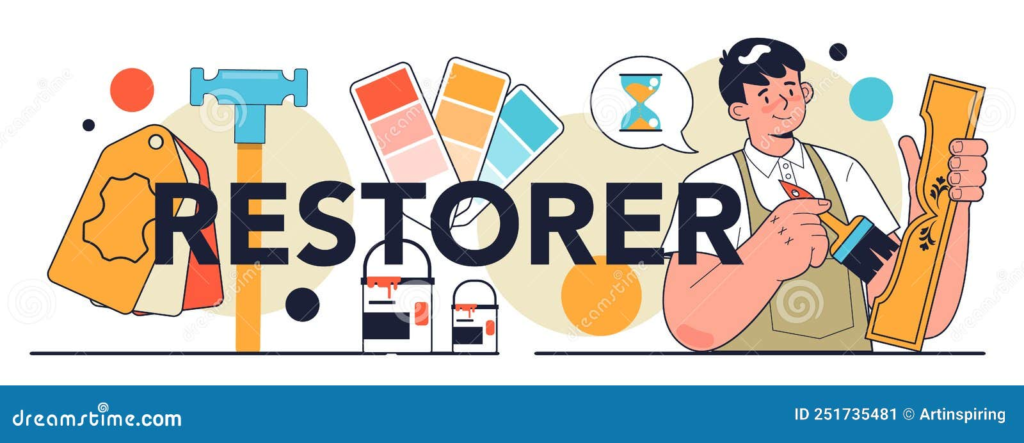Cleaning tile grout regularly prevents the build-up of dirt and soap scum, and helps keep disease-causing bacteria at bay. Regular cleaning can also help your tiles last longer.
Before your professional cleaner arrives, make sure you remove furniture (with felt pads) and other items from the area being cleaned. Contact Tile And Grout Cleaning El Dorado Hills CA now!

You might remember your parent using hydrogen peroxide to clean a wound as a kid, but the chemical does more than just disinfect wounds. It also offers a safe alternative to bleach products, posing no real health risks and causing less environmental harm. Plus, it is a common household item that can be found at most grocery stores or drugstores (and probably in your medicine cabinet).
A 6% solution of hydrogen peroxide works wonders for bathroom tile cleaning by loosening and lifting dirt from grout lines. To use it, simply mix equal parts of hydrogen peroxide with baking soda and apply the solution to the affected area. Allow it to sit for 10 minutes, then scrub with a toothbrush and rinse.
Hydrogen peroxide is also a good replacement for chlorine bleach, which is extremely caustic and can damage tile surfaces if used over an extended period of time. Bleach can etch, scratch and even crack some types of tiles and grout. It can also corrode subflooring and wick down through the grout to your baseboards, where it can leave permanent marks and stains.
Another great non-toxic grout cleaner is citric acid powder, which can be purchased from most department and grocery stores. Add two tablespoons of the powder to one litre of water and spray the grout. Let it work for a few minutes, then wipe clean with a microfibre cloth. This product is also biodegradable and free of VOC’s, making it ideal for hard-floor applications. It also kills odor-causing soils and is a perfect substitute for harsh detergents.
Baking Soda
Sodium bicarbonate, better known as baking soda, is a mildly abrasive cleaner that works well on stubborn dirt and grime. It is also effective for sanitizing tile and grout. Unlike bleach, which can damage certain types of tile and grout, baking soda is non-corrosive. It can be used to clean all surfaces in the home, including carpet and countertops. It can be sprinkled on surface and scrubbed in with a brush, sponge or old toothbrush. It is also a great addition to cleaning tools like steam cleaners because it helps to lift dirt and prevent clogs. Baking soda can be used on its own to clean or mixed with other ingredients to help break down stains and odors.
Most of the time, baking soda is used to fight odors in the bathroom and kitchen, where strong acids or bases often create obnoxious smells. A small amount of baking soda in a container in the refrigerator can help control bad odors. In the kitchen, baking soda can be sprinkled on top of garbage to help reduce odors and is also useful for cleaning and deodorizing counters, sinks, drains, stovetops, dishes and other surfaces.
For stained or dingy tile and grout, a mixture of baking soda and hydrogen peroxide is usually the best solution. The combination is a powerful cleaner that combines the mildly abrasive properties of baking soda with the whitening and disinfecting abilities of hydrogen peroxide. Start by mixing equal parts of baking soda and water to make a paste. Then add in some hydrogen peroxide and stir until you get the right consistency. Let the paste sit on the tile for about 10 minutes before scrubbing. If the stain is particularly stubborn, allow the mixture to sit longer.
Citrus-Based Cleaners
Citrus-based cleaners use natural oils and extracts from citrus fruits to replace harsh chemical cleaning products. They are effective at removing dirt and grime from tile surfaces and can be used in a variety of cleaning applications. However, they may be less effective than other cleaning products at removing particularly tough stains or soil. They also can damage certain surfaces if not used properly. It is important to test a small area of the surface before using the product. It is also important to ventilate rooms with tiled surfaces well to reduce humidity levels that can encourage bacterial growth.
The d-limonene in citrus oil is the main ingredient of this powerful cleaner. This natural solvent has a pleasant orange-type smell and is responsible for its excellent performance on oily stains. It is water-dilutable and environmentally friendly, making it suitable for a wide range of cleaning tasks. It can be used by hand, with a mop and bucket, or with floor scrubbers, proportioners, or power washers.
This product is designed to safely and effectively clean and degrease a wide variety of surfaces including flooring, equipment, machinery, walls, tools, and automotive vehicles. It works well on floors, porcelain and fiberglass. It is safe for epoxy coated and concrete floors and can be diluted for lighter soils. It is also formulated to promote quick and complete rinsing, leaving no alkaline residues if adequately rinsed.
It is important to clean tile and grout regularly to maintain hygiene. Dirty tile surfaces can become breeding grounds for bacteria that can lead to health problems, such as asthma and allergies. Keeping surfaces clean can help prevent the buildup of harmful bacteria, and it is vital to apply a grout sealant after cleaning to protect the surface from future accumulation.
Vinegar
Vinegar is a natural cleaning agent that works well on most tile surfaces, including showers and kitchen countertops. Its acidity penetrates the pores of the grout, dissolving and loosening dirt, grime, soap scum, and other buildup. It also kills bacteria and fungi that are found on these porous tile surfaces.
Distilled white vinegar is the best type of vinegar to use for cleaning tile. It has a low acidity level and is relatively inexpensive. It can be diluted with water to create a cleaning solution. The amount of water and vinegar that you add to the mixture will depend on the severity of the stains or buildup you are trying to remove from your tile surface.
A vinegar cleaner can be used several times a week to help prevent the formation of hard-water deposits and keep your tile and grout looking its best. It can be sprayed directly onto the tiles or grout, and you can scrub with a toothbrush and a damp cloth. After scrubbing the tile and grout with your vinegar cleaning solution, you should rinse away any remaining residue with clean water.
While it is possible to damage your ceramic tile by using abrasive cleaning products or cleaning agents that are too strong, most people do not have any serious issues with their tile and grout after regular use of an appropriate vinegar cleaner. However, it is important to remember that some types of tile cannot be cleaned with vinegar, especially if they are sealed.
Bleach
Bleach is a common choice for cleaning tile and grout because of its stain-removal properties. However, bleach is also highly corrosive and emits toxic fumes. It can also be harmful to grout and cause discoloration if used frequently. According to the Tile Council of North America (TCNA), you can avoid these risks by using alternative cleaning methods or products.
A powdered oxygen bleach cleaner such as OxiClean can be an effective and safer alternative to chlorine bleach for scrubbing stains from tile and grout. Mix this product with water to form a paste and apply it to the affected area, then scrub. Use a non-toxic brush or toothbrush to work the solution into the grout lines. Then rinse the area with clean water and allow it to dry completely before sealing the grout.
Hydrogen peroxide is another household cleaner that can be used to whiten and clean tile and grout. It’s a good idea to dilute the hydrogen peroxide with water to minimize its corrosive effects and chemical smell. This method is less harsh on grout than bleach and can be less expensive.
Another option for cleaning grout is a commercial tile and grout cleaner that can be purchased from a hardware store or equipment rental business. These products are designed specifically for this purpose and come with detailed instructions and safety precautions. They can be a more expensive option than bleach, but they may be worth the investment for some households. They can also help to restore grout to its original color without the need for scrubbing. Finally, you can purchase a penetrating grout sealer to prevent future staining and make the cleaning process much easier.






